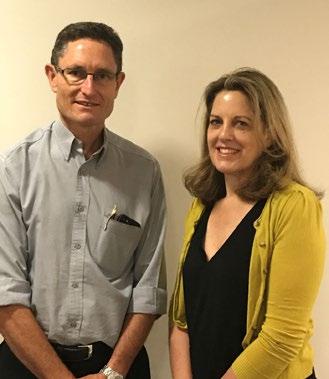
3 minute read
Case note review
Introduction of the audit of surgical mortality in Tasmania
Tasmania has Australia’s oldest (median age 42) and most regionally dispersed population. A relatively high proportion of its population of around 534,000 (as of June 2019) lives in areas of disadvantage, as compared with other states. More than 33 per cent of Tasmanians are living within geographic areas in the lowest quintiles of disadvantage, as classified by the Australian Bureau of Statistics’ socio-economic indexes for areas. Along with age and socio-economic disadvantage, reduced education rates, reduced employment rates and other environmental factors combine with the result that Tasmanians have the highest burden of chronic disease, the highest prevalence of risk factors (e.g. smoking prevalence and high blood pressure) and generally the poorest health outcomes of any state in Australia.
Advertisement
Tasmania was the second jurisdiction in Australia to introduce an audit of surgical mortality in 2004. This was based on the successful introduction of the Western Australian Audit of Surgical Mortality (WAASM), which commenced on 1 June 2001 as a pilot project under the management of the University of Western Australia (based on the then Scottish Surgical Mortality Audit).
Mr Rob Bohmer and I were appointed by the Tasmanian Audit of Surgical Mortality (TASM) Management Committee as the inaugural chairman and program manager, respectively. Together we have now completed 16 annual reports. While working under the aegis of the RACS TASM Management Committee my salary has been paid by the Tasmanian Department of Health (DoH) under a contracted arrangement. As a result, I actively participate in the Clinical Quality, Regulation and Accreditation unit within DoH, Tasmania.
Due to Tasmania’s relatively small number of public hospitals (Royal Hobart Hospital, Launceston General Hospital, North West Regional Hospital and Mersey Community Hospital), Tasmania quickly arrived at a position where every surgeon in public practice in the state was enrolled in the audit. From the outset, all public hospitals referred all eligible deaths fitting the audit criteria to TASM.
Tasmanian private hospitals were also engaged from 2004. Calvary Health Care operates two hospitals in Hobart, Calvary Lenah Valley and St John’s Hospital, and two in Launceston, St Luke’s Hospital and St Vincent’s Hospital. In addition, Healthscope operates the Hobart Private Hospital, and Healthcare Australia Pty Ltd operates the North West Private Hospital in Burnie.
Tasmania became the first state in Australia to include all anaesthetists in the audit, starting from 2004. This initiative has since been picked up by other jurisdictions, including New Zealand.
Over the past 16 years, 2300 deaths have been reported to TASM. These have all been recorded and reviewed, giving TASM a rich dataset of surgical mortality.
Recruitment of both surgeon and anaesthetist first-line assessors has been very strong since the inception of TASM, however an issue in a small jurisdiction such as Tasmania, is the ability to appoint second-line assessors. TASM welcomes and encourages recruitment of secondline assessors.
Not only does this activity provide continuing professional development (CPD) points to the assessor, but it provides deeper learning into the patient journey and identification of where there may have been system or process errors. The feedback provided to the treating surgeon and anaesthetist helps inform and educate them about valuable lessons learned and helps facilitate change for best practice.
The RACS TASM Management Committee meets twice a year, with the membership consisting of RACS members, a member of the Australian and New Zealand College of Anaesthetists, a member from the Tasmanian DoH, and a member from the Royal Australian and New Zealand College of Obstetricians and Gynaecologists. The Chair, Mr Rob Bohmer, specialises in upper gastrointestinal and hepatobiliary surgery across both the public and private sectors.
In conjunction with the Tasmanian DoH, TASM presents individual hospital reports to each public and private hospital in Tasmania every year. The state TASM report is tabled with the Tasmanian Minister for Health and the Secretary of Health at the end of each calendar year.
There are ongoing professional development activities either run by TASM or undertaken in conjunction with RACS and the Tasmanian DoH Clinical Quality, Regulation and Accreditation unit. These sessions have been well supported and provide opportunities for ongoing discussion about quality improvement in areas such as unexpected death, improving patient outcomes, patient safety and culture.
Main picture: Ms Lisa Lynch (with Mr Rob Bohmer FRACS)






